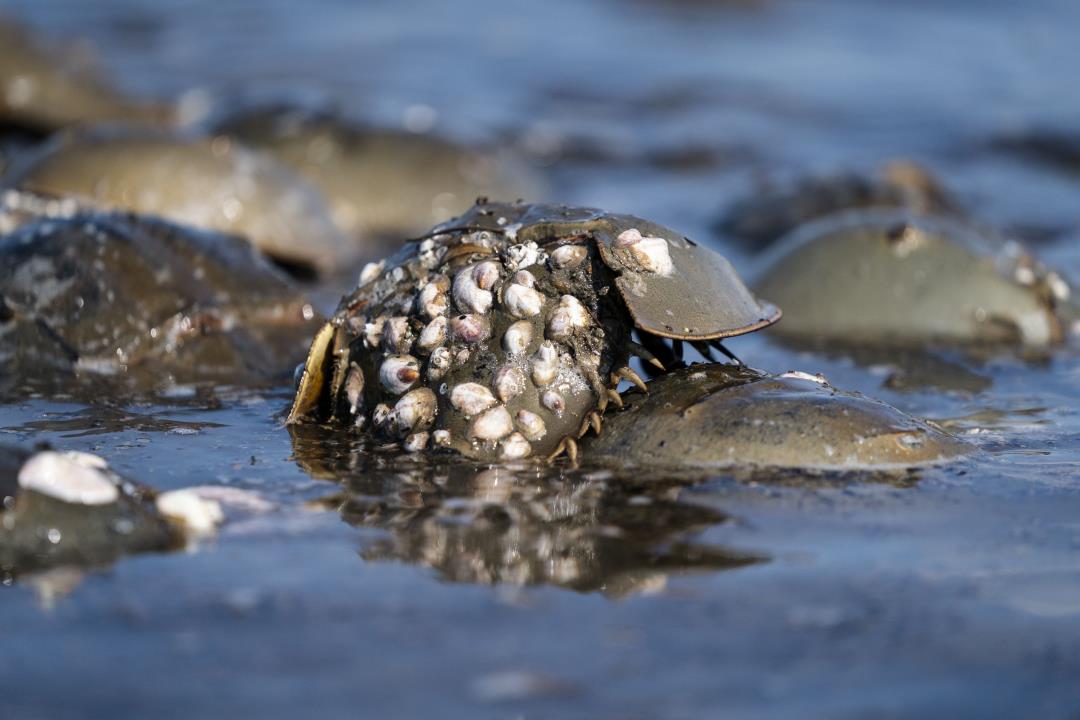
A fascinating ancient sea creature, pivotal in the production of vital medicines, and residing in the tidal mudflats along the East Coast, stands to benefit from new protective standards. However, despite these developments, conservationists remain concerned about the declining bird species that relies on the horseshoe crabs. Dive deeper into this complex issue with AP’s comprehensive report.
- The crabs: Drug and medical device manufacturers heavily rely on the valuable blue blood of horseshoe crabs, which have been scuttling in the ocean for over 400 million years, to test for potentially harmful impurities. While the animals are returned to their environment after their blood is drawn, many of them perish from the process. Although recent revisions to handling guidelines aim to increase their survival rate, these creatures are still facing population decline along the East Coast.
- The birds: Harvesting horseshoe crabs, also caught as bait in the commercial fishing industry, has become a critical issue for conservationists due to their crucial role in coastal ecosystems. These crabs’ eggs serve as vital food for a subspecies of bird called the red knot, a migratory shorebird listed as threatened under the Endangered Species Act. To ensure their survival, Bethany Kraft, the senior director for coastal conservation at the Audubon Society, emphasizes the necessity for stronger protections of horseshoe crabs.
- The blood: Horseshoe crabs possess valuable blood that can be synthesized into limulus amebocyte lysate (LAL), used to detect pathogens in essential medicines like injectable antibiotics. Fishermen manually collect the crabs or use trawlers to supply biomedical companies with the crabs, which are then processed to separate their blood and proteins. It takes dozens of crabs to obtain enough blood for a single glass tube, containing immune cells sensitive to bacteria. While the exact value of their blood is difficult to verify, activist groups often estimate it to be worth $15,000 per quart.
- New rules: Regulators estimate that approximately 15% of the crabs die during the bleeding process, amounting to around 112,000 deaths in 2021 according to Caitlin Starks, a senior fishery management plan coordinator at the Atlantic States Marine Fisheries Commission. In contrast, the bait fishery for horseshoe crabs, used to catch eels and sea snails, resulted in more than six times that number of deaths. Nonetheless, the fisheries commission has recently approved new best management practices for the biomedical industry’s harvesting and handling of horseshoe crabs. These practices include minimizing sunlight exposure and keeping the crabs cool and moist to ensure higher survival rates upon release, with the goal of contributing to the ecosystems.
(Read more here, including efforts to develop a synthetic substitute for horseshoe crabs’ blood.)
Denial of responsibility! VigourTimes is an automatic aggregator of Global media. In each content, the hyperlink to the primary source is specified. All trademarks belong to their rightful owners, and all materials to their authors. For any complaint, please reach us at – [email protected]. We will take necessary action within 24 hours.


